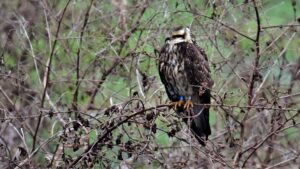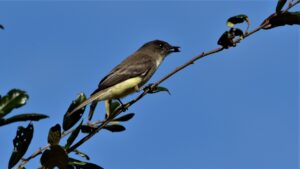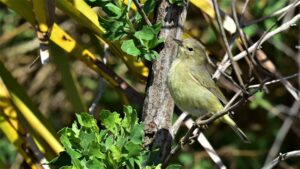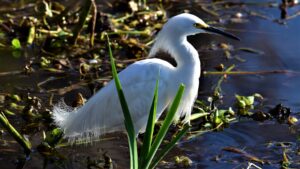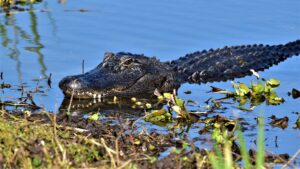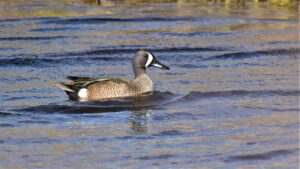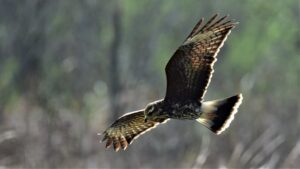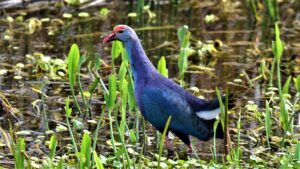What would make retired people, who like to sleep in and have a lazy start to their day, get out of bed at 6:30 AM? Well, for us, it was the chance to see some amazing birds during the calm and cool hours of the day. And we were not disappointed.
We had been told that the area around Gainesville was a good spot to find birds in the winter and, boy, was that correct. Gainesville has many parks and trails all around it, but we spent our time in two of the biggest parks: Paynes Prairie Preserve State Park and Sweetwater Wetlands Park.
We spent 5 days visiting the parks, discovering some birds we had not seen before and taking lots of photos. Below are some of our favorite shots.
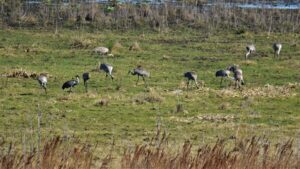 Pynes Prairie is the winter home to thousands of Sandhill Cranes and it was an impressive sight to climb the observation tower at the Visitors Center and see cranes in the wetlands as far to the north as you could see. When we were arriving at Gainesville, we saw a small field beside the highway where dozens of cranes were enjoying a marshy meadow.
Pynes Prairie is the winter home to thousands of Sandhill Cranes and it was an impressive sight to climb the observation tower at the Visitors Center and see cranes in the wetlands as far to the north as you could see. When we were arriving at Gainesville, we saw a small field beside the highway where dozens of cranes were enjoying a marshy meadow.
Quite often during the week we stayed in Gainesville, we heard and saw cranes flying above us as they began their journeys north again. (We wrote about watching cranes in the prior post: ‘Our Summer in Montana’.)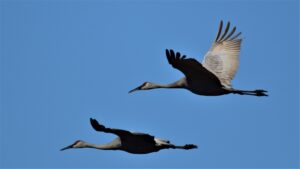
Both parks are also home to two very specialized birds that we had never heard of before and who have a taste for snails. The Limpkin and the Snail Kite both have special beaks which they use to extract the tasty Apple Snails from their shells. The two birds are completely different in looks and techniques, and from the piles of empty snail shells we saw scattered around, they are very successful hunters.
The Snail Kite is a medium sized bird with a very hooked beak and long claws. They hunt over water, hoping to find a floating Apple Snail.
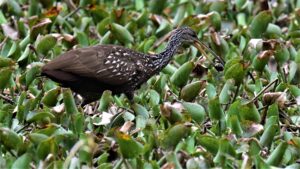 The Limpkin is large, long-legged and loud. You can certainly hear a Limpkin from a distance. They wade and probe for snails with their long beaks.
The Limpkin is large, long-legged and loud. You can certainly hear a Limpkin from a distance. They wade and probe for snails with their long beaks.
Wood Storks are very large mostly white birds with massive bills that we had seen a few times before, but always from a distance.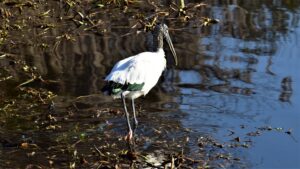 One morning we just happened upon one that was feeding in the water close to a viewing area and we discovered that what we had thought of as black feathers were actually a lovely shade of green in the sunlight.
One morning we just happened upon one that was feeding in the water close to a viewing area and we discovered that what we had thought of as black feathers were actually a lovely shade of green in the sunlight.
LBB’s as we call them, ‘Little Brown Birds’, are really hard to identify because they flit around in bushes very quickly and it can be difficult to pick out the characteristics that determine their species. We did manage to identify a few that hung around long enough to be photographed.
Eastern Phoebe
Orange-crowned Warbler
Robins aren’t really LBB’s but this one was sitting in the sunlight and posing nicely for a photo, so we included it.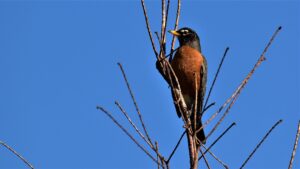
Herons are some of our favorite birds because they are pretty, and it is fun to watch them hunt for food.
Tri-colored Herons are actually quite small-bodied. 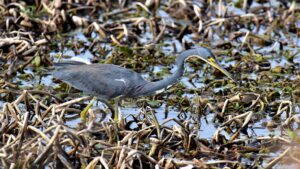
The Little Blue Heron is one of our favorite birds because of their brilliant blue color and reddish head. 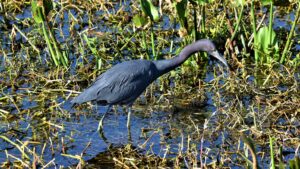 .
.
Seeing a Great Blue Heron in Montana is a pretty rare treat, but in the south we have become accustomed to having them around us when we are in wet environments. 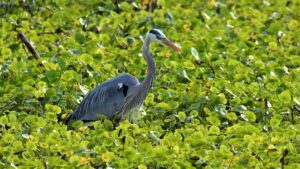 We never tire of watching them.
We never tire of watching them.
The snow is still blowing around up north, but in Florida in February some birds have begun to lay eggs already. We found this Blue Heron sitting on a nest.
A Litttle Blue Heron is actually white the first year of its life and this one is just beginning to get its adult coloring.
Green Herons are quite pretty and more shy than some of the other herons.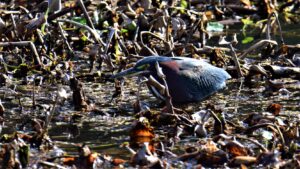
They kind of hunch up when on the ground.
Glossy Ibis is another bird that looks almost black, until the sunshine hits those shiny feathers.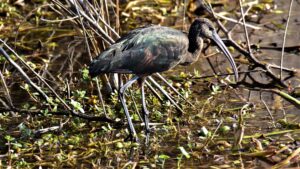
Snowy Egrets have black bills and yellow feet:
Some of the more unusual and interesting birds that we saw:
Gallinule are pretty birds with very large feet that they use to walk on water plants.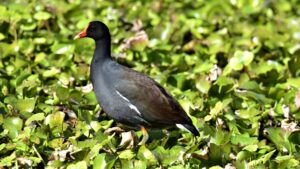
Sora are quite small water birds that run in and out of reeds. Their markings are striking.
Not a bird, but these guys are all over the place, so it seems appropriate to include them.
Turkey Vultures have a face that only their mother can love!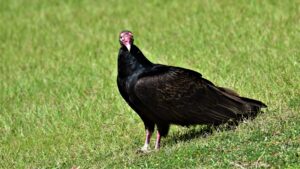
This swamp rabbit does have a cute face.
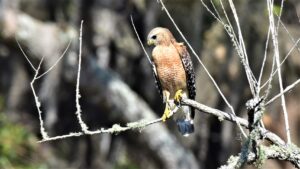 Red-shouldered Hawks are another fairly common bird in Florida; we have seen quite a few.
Red-shouldered Hawks are another fairly common bird in Florida; we have seen quite a few.
Three of the duck species that we found in the parks:
Blue-winged Teal
Hundreds of boldly-colored Black-bellied Whistling Ducks, whose calls are like whistles, were in Sweetwater. 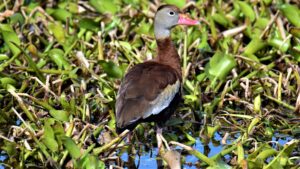
We found one pair of Mottled Ducks, with their striking feather patterns.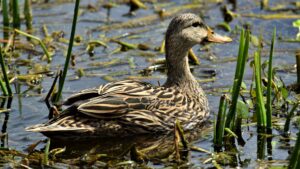
We found this guy hanging around in the reeds in the sunshine.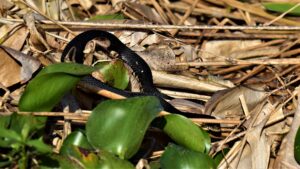
A couple of our very favorite photos:
Another new bird for us and one that just glowed in the sunshine: Grey-headed Swamphen.

